Abstract
Anaerobically digested dewatered sludge (10 to 15 cm thick) was applied to a forest clearcut as a fertilizer source in northwest Washington on gravelly glacial outwash soil. This sludge is not microbiologically sterile and may contain pathogenic organisms. Fecal coliform bacterial counts in sludge applied in summer (July) fell from 1.08 X 10(5) to 358/g in 204 days and to 0/g in 267 days. Dieoff appeared more rapid in winter (January)-applied sludge, when colnts fell from 1.2 X 10(5) to 20/g in 162 days. Initial death rates were related to sludge temperature, moisture, pH, physical composition, and microbial competition. Aftergrowth of fecal coliforms occurred in warm summer and fall months, but counts were of similar magnitude to background levels in forest soils, where a maximum count of 54/g was recorded. Total coliform counts in fresh sludge ranged from 1.4 X 10(4) to 1.9 X 10(6)/g. Numbers stabilized at 10(3) to 10(4)/g in spring, fall, and summer, with lower numbers in winter. Both total and fecal bacteria moved from the sludge to the soil beneath, but few penetrated past the first 5 cm. The soil acts as an effective biological filter. Few fecal coliform bacteria were recorded in the groundwater, generally being less than 5/100 ml and mostly 0/100 ml. A maximum count of 52/100 ml was recorded. Groundwater contamination from vertical movement of potential pathogens appears unlikely, but hazards from surface runoff and direct handling in the first year may arise.
Full text
PDF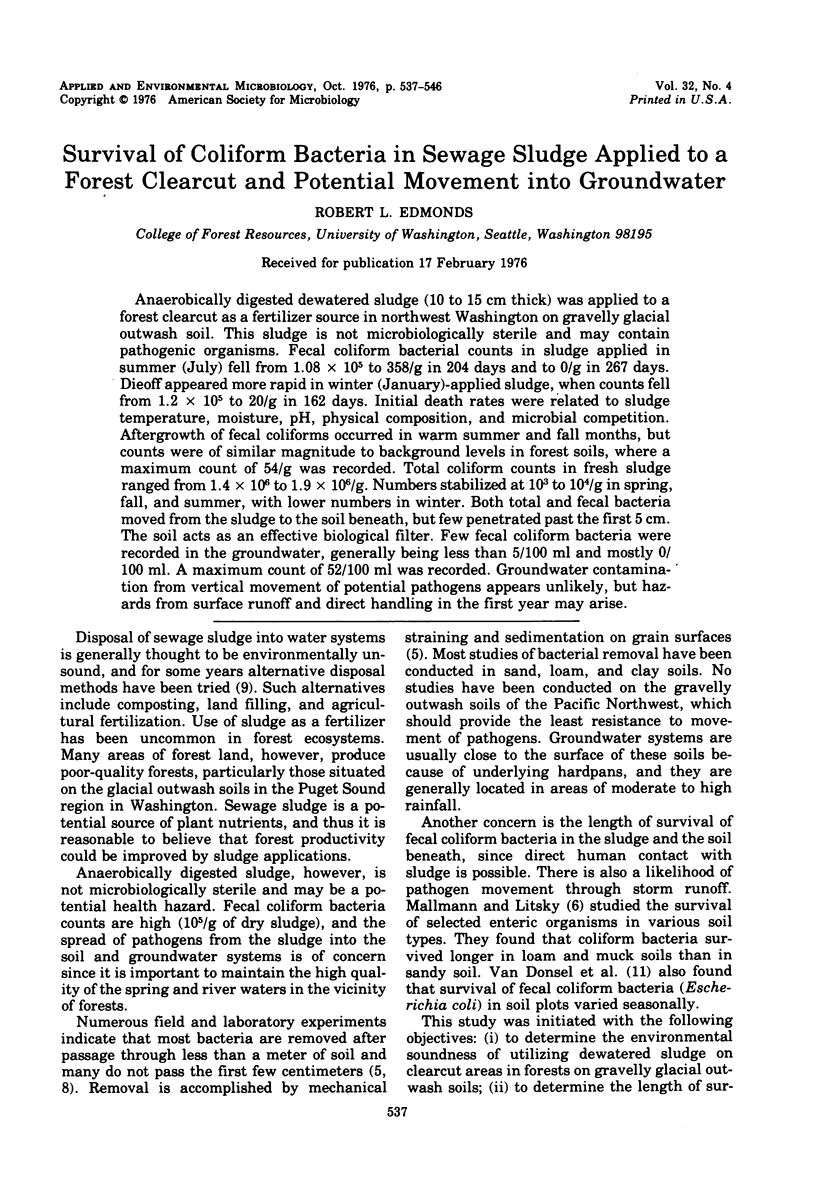
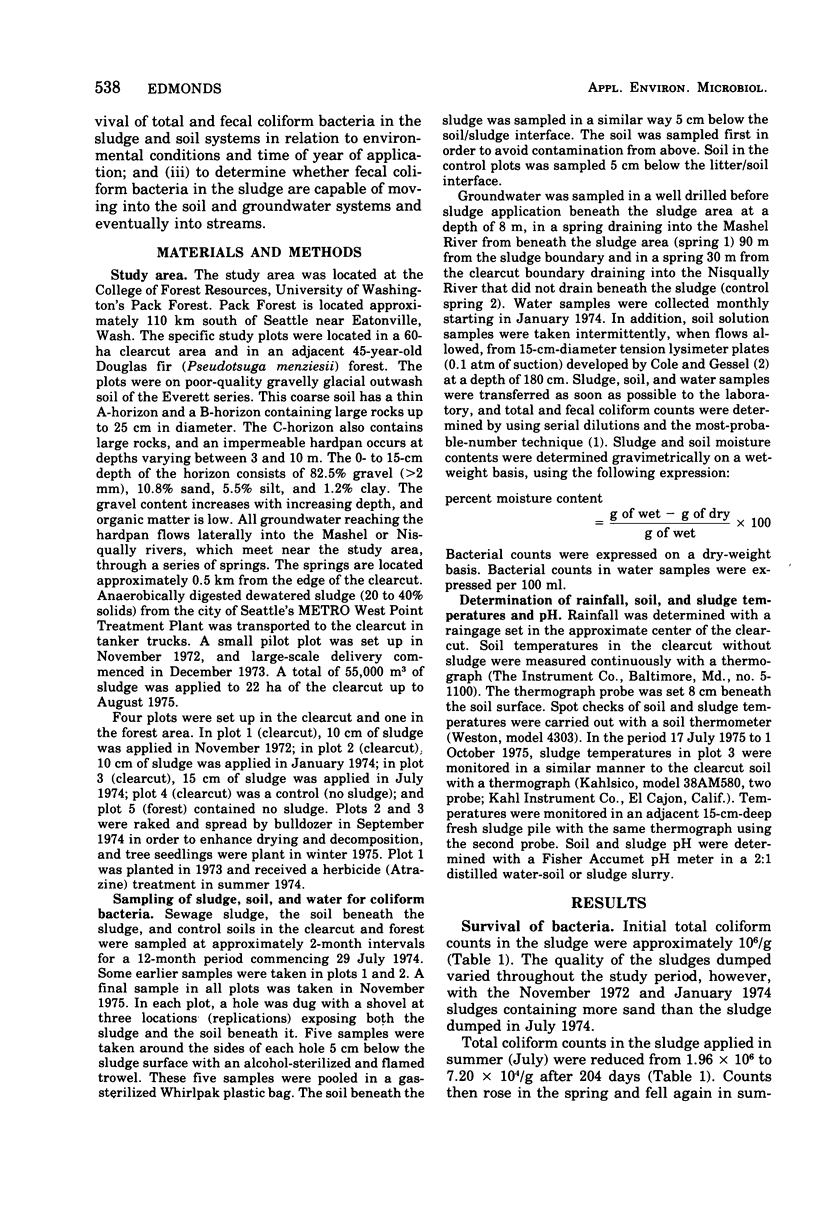
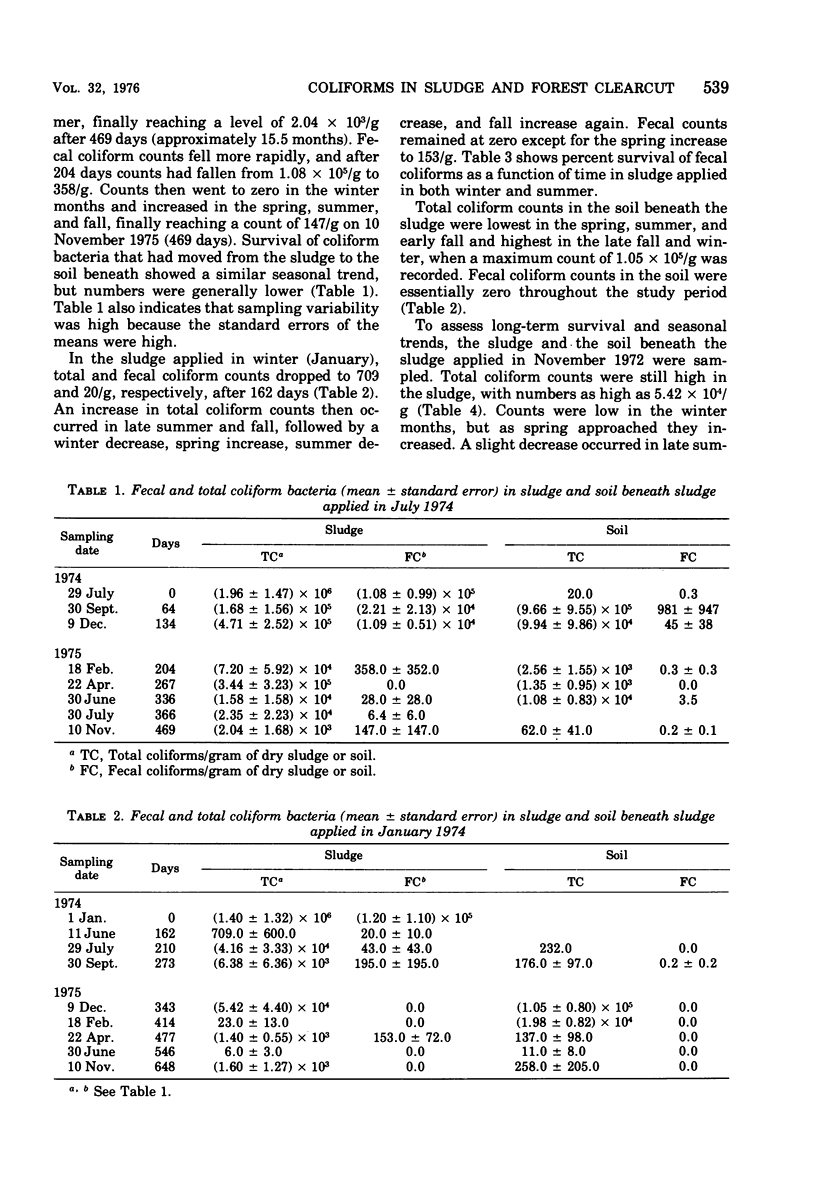

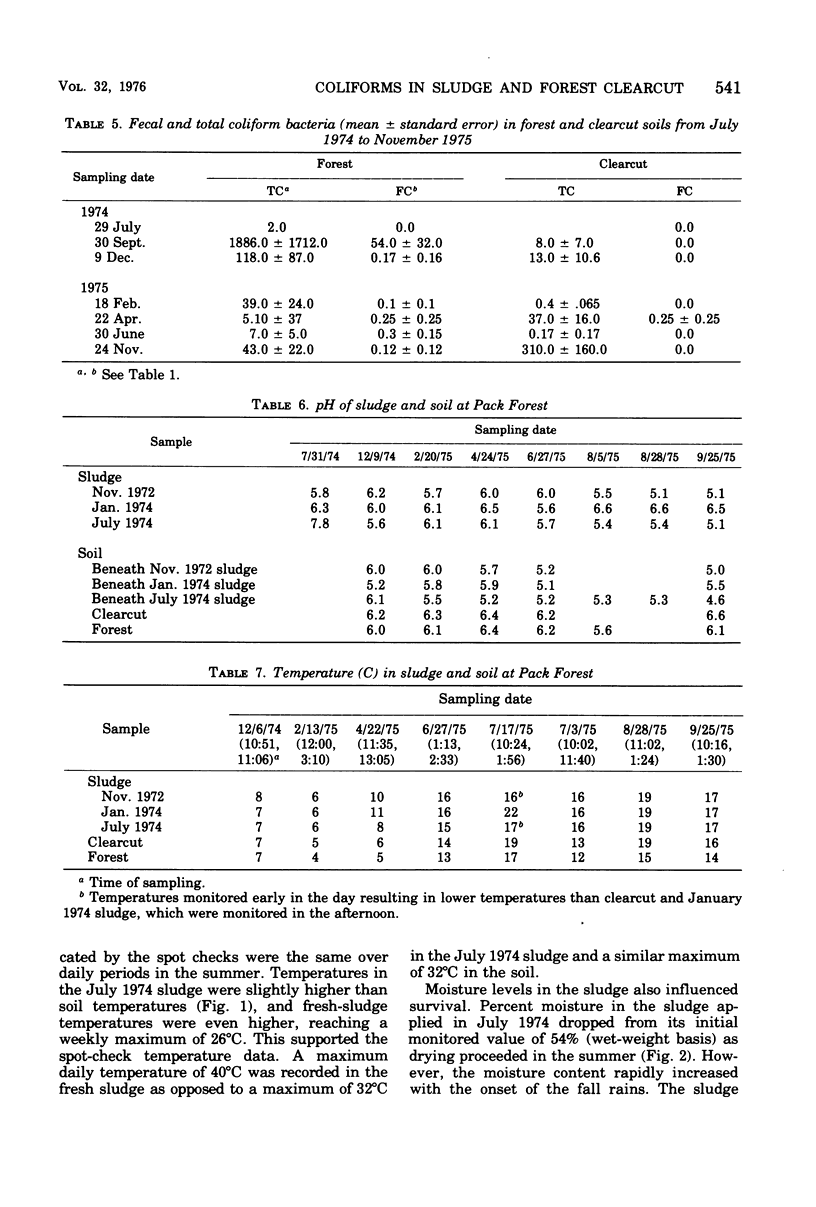
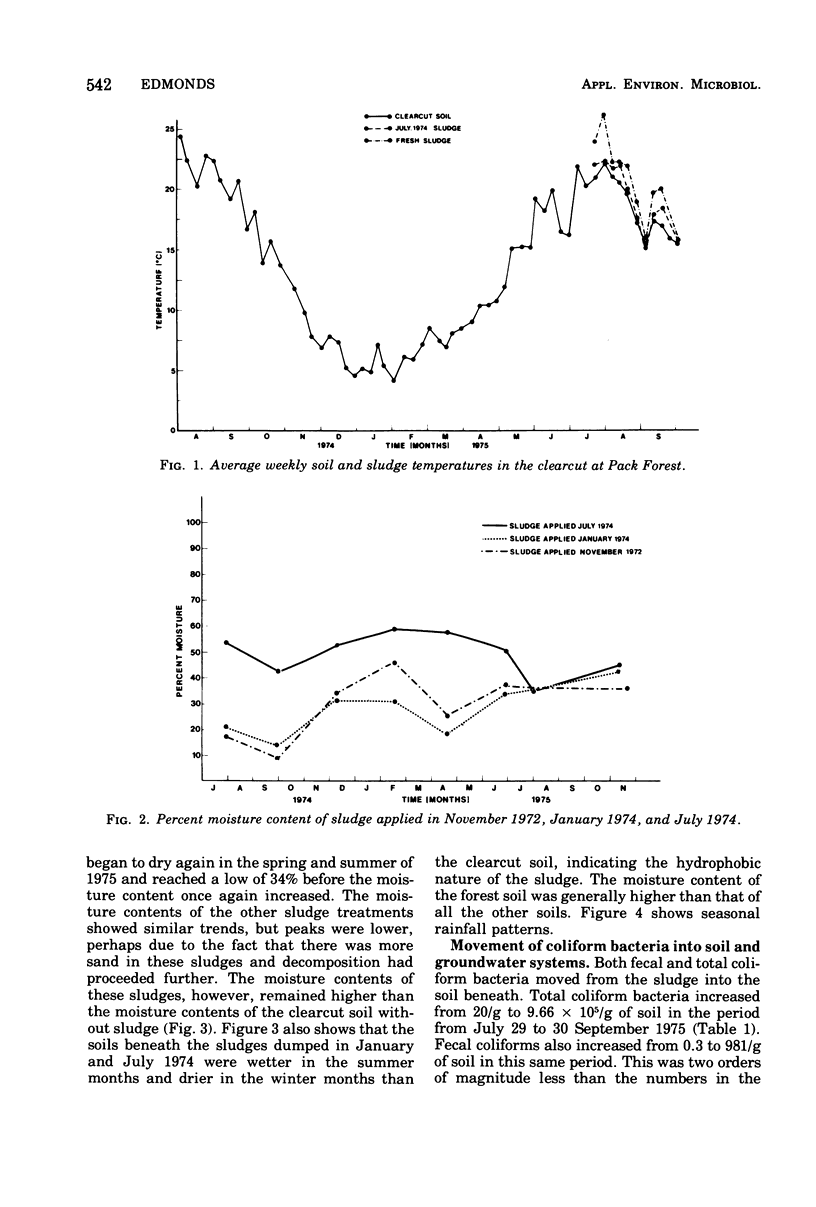
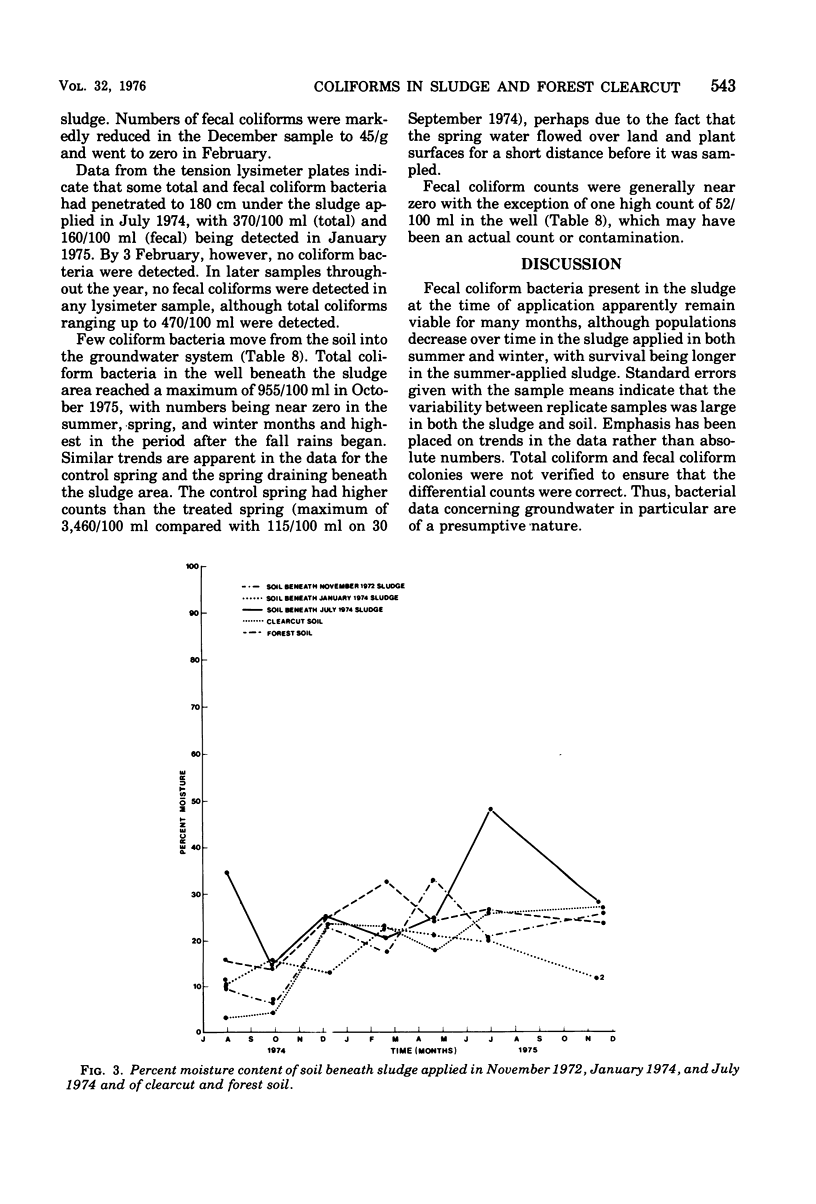
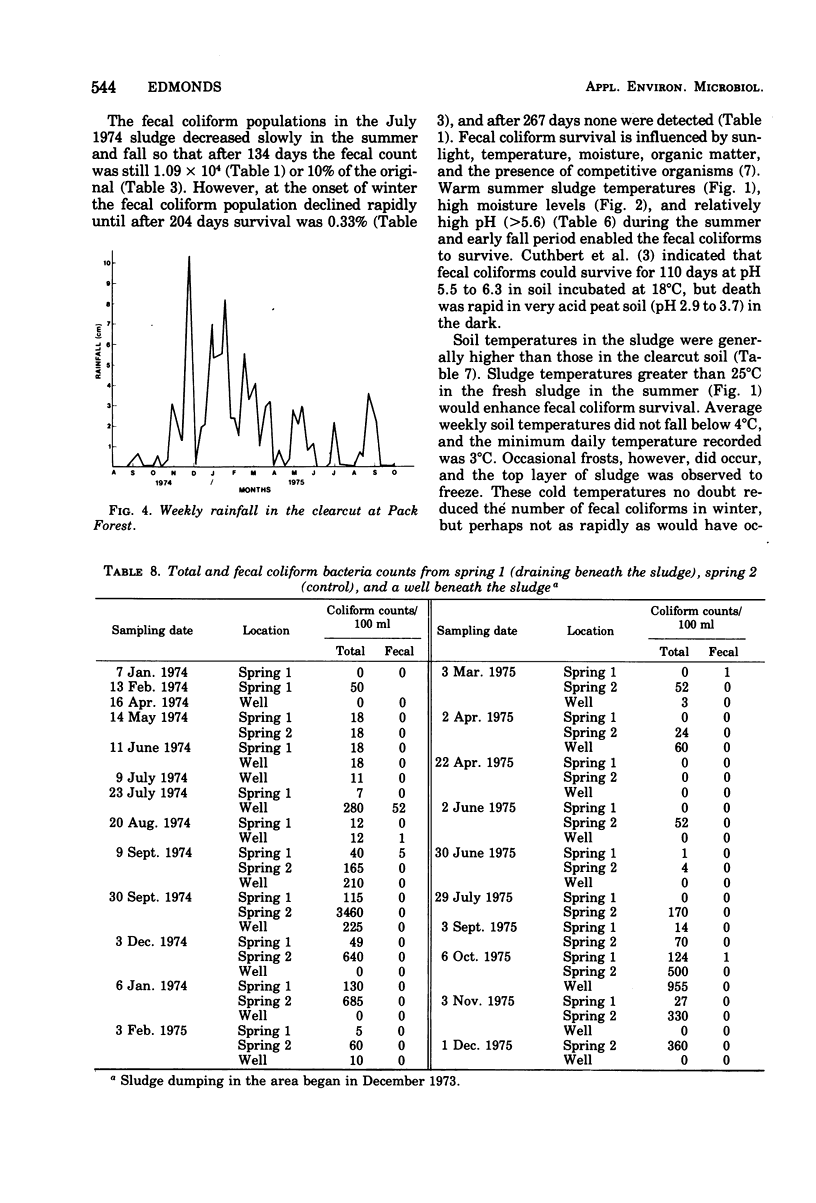

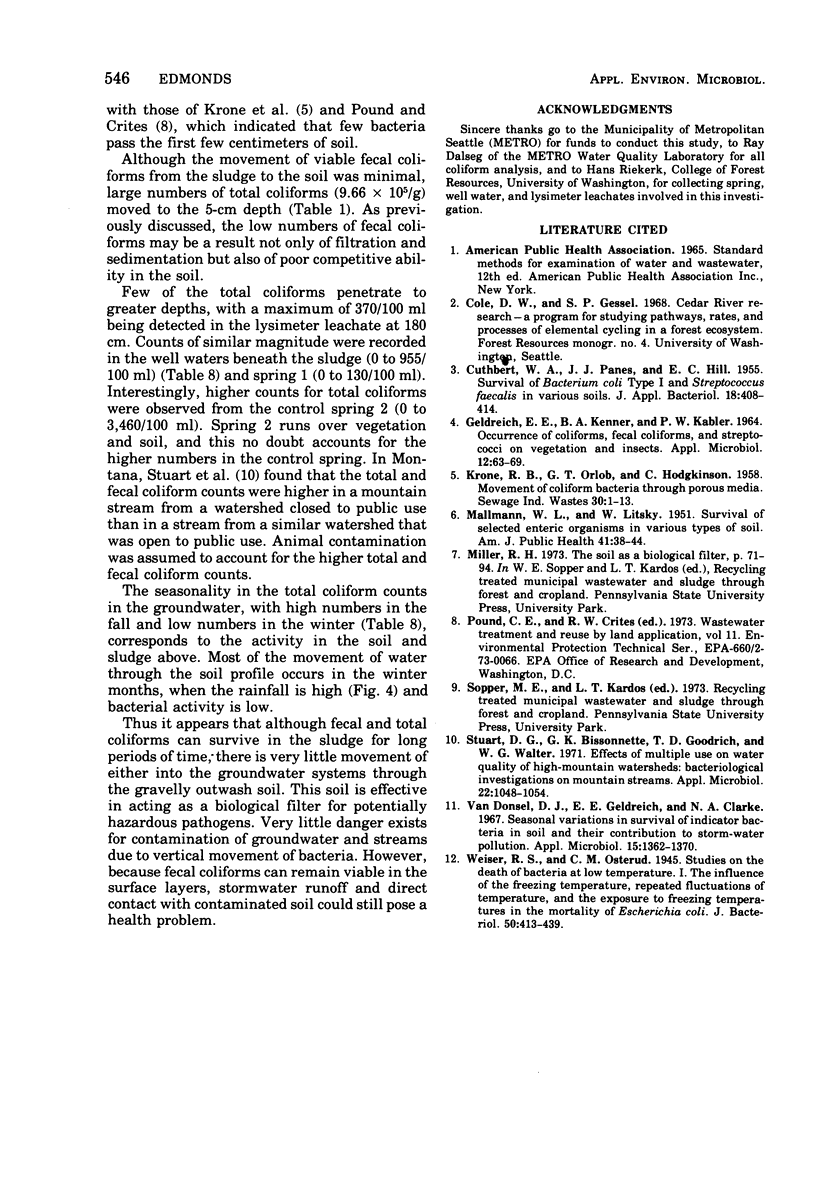
Selected References
These references are in PubMed. This may not be the complete list of references from this article.
- GELDREICH E. E., KENNER B. A., KABLER P. W. OCCURRENCE OF COLIFORMS, FECAL COLIFORMS, AND STREPTOCOCCI ON VEGETATION AND INSECTS. Appl Microbiol. 1964 Jan;12:63–69. doi: 10.1128/am.12.1.63-69.1964. [DOI] [PMC free article] [PubMed] [Google Scholar]
- MALLMANN W. L., LITSKY W. Survival of selected enteric organisms in various types of soil. Am J Public Health Nations Health. 1951 Jan;41(1):38–44. doi: 10.2105/ajph.41.1.38. [DOI] [PMC free article] [PubMed] [Google Scholar]
- Stuart D. G., Bissonnette G. K., Goodrich T. D., Walter W. G. Effects of multiple use on water quality of high-mountain watersheds: bacteriological investigations of mountain streams. Appl Microbiol. 1971 Dec;22(6):1048–1054. doi: 10.1128/am.22.6.1048-1054.1971. [DOI] [PMC free article] [PubMed] [Google Scholar]
- Van Donsel D. J., Geldreich E. E., Clarke N. A. Seasonal Variations in Survival of Indicator Bacteria in Soil and Their Contribution to Storm-water Pollution. Appl Microbiol. 1967 Nov;15(6):1362–1370. doi: 10.1128/am.15.6.1362-1370.1967. [DOI] [PMC free article] [PubMed] [Google Scholar]
- Weiser R. S., Osterud C. M. Studies on the Death of Bacteria at Low Temperatures: I. The Influence of the Intensity of the Freezing Temperature, Repeated Fluctuations of Temperature, and the Period of Exposure to Freezing Temperatures on the Mortality of Escherichia coli. J Bacteriol. 1945 Oct;50(4):413–439. [PMC free article] [PubMed] [Google Scholar]


